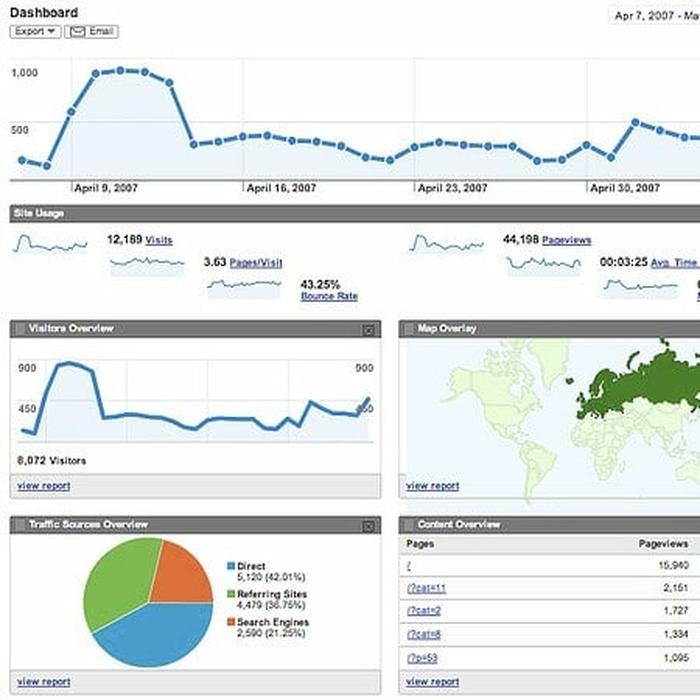
I recently asked a few startups why they avoid thinking about SEO. The most common reason I heard was some variant on the theme “SEO seems like this big huge thing that requires a lot of knowledge.”
There’s a perception out there that SEO is complex—and so many companies choose to ignore it. But while this perception is somewhat deserved, the building blocks of search engine optimization are actually pretty straightforward. Plus, if you ignore SEO, you’re essentially turning your back on the largest source of free customers on the web—Google.
A Quick Test: Does Your SEO Need Improvement?
At the same time, many websites don’t realize they’re ignoring SEO or actively making it difficult for Google to discover their content. Here are three quick ways to know if your SEO needs improvement:
If any of these are the case, it’s time to spend at least a couple of hours thinking about SEO. No, you’re not going to displace Yelp, SimplyHired, or TripAdvisor overnight, but you can position yourself to get more traffic from Google. Here are five basic steps to get you started.
1. Choose if your Site is “Long Tail” or “Head”
It’s important to decide early on whether to focus your SEO attention narrowly or broadly—you’re probably not going to win on both. “Head” sites aim to rank well for common terms that are searched for thousands of times a day, like “how to get a job.” Long tail websites, on the other hand, try to rank well on Google search results for specific, more uncommon searches—the goal being to attract search volumes that, when combined, total that of the more common keywords.
If you’re a local dentist, you can probably only focus on one or two key phrases (“Manhattan family dentist,” for example). On the other hand, if you’re a national directory for dentists, there are thousands of keywords you can target (“emergency dental work in Mobile, Alabama,” for example).
My company, Priceonomics, aims to be the “price guide for everything”—so we set it up as firmly a long tail site. The site includes guides for everything imaginable—cars, computers, used mobile phones, digital cameras, and dozens more price guides—but we know that people are usually looking for specific item when they search. So, when someone is searching for something like a used Motorola Droid Razr, we hope to be one of the first to provide the answer.
2. Organize Your Content Using Bread Crumb Navigation
Your goal should be to allow Google to easily access and understand all the pages on your site. Google crawls through your pages with “spiders,” and when they come to a random page, they try to follow the links on that page to get to other pages. If they can do that easily, Google can more quickly index your whole website and pull pages in to its search results.
A great way to do this is using bread crumb navigation—or, a “trail” for your content that allows users to quickly see where a page fits relative to the rest of the site. For example on Priceonomics, a listing for a MacBook Pro might look like this:
All Price Guides > Computer Price Guide > Apple Computer Price Guide > MacBook Pro 15" 2011 Price
After you’ve set up this bread crumb navigation, set up your URL structure to mirror it exactly—users (and Google) will be even happier. For example:
http://priceonomics.com/computers/apple/macbook-pro-15-2011/
3. Optimize Your Page Titles
When you do a Google search, the blue links displayed below the main result are usually the website’s page titles. So, if you have accurate and descriptive page titles, Google will better be able to know if it should present your content to its users. For example, on our price guide for used cell phones, the page title is Used Phone Prices | Phone Price Guide. Often times, you’ll see sites where all the page titles are the same (for example, if we’d called every page “Price Guide”)—and that doesn’t help Google know what the page is about.
Google also crawls the text of the page, including headers and subheads, so make sure that those are reflective of the content, too. The key is to strategically include keywords throughout your content—though they should make sense to the user, not look like an obvious list (remember the days of the “keyword dumps” at the bottom of the page?).
4. Build Original Content
Google wants to direct its visitors to original primary content—not a re-post of something that’s already been published. So, even in the early days of your site, it’s best create your own content, rather than syndicating from other sources. Similarly, be choosy about who you let republish your content. If Google thinks the other source is the primary source and you’re the derivative, it will penalize you. On the flip side, if your content is the best (and only) answer to a very specific query, there is a high chance you’ll be rewarded by Google.
5. Get Inbound Links
Google wants to send users to websites that are considered “authorities” in a subject area. Today, Google primarily calculates this by seeing if reputable sites are linking to you. Google also looks to see what words those websites use when linking to you to understand what your site is about (this is called “anchor text”). For example, if lots of sites link to Priceonomics calling us a “price guide,” Google will eventually figure out that that’s what we are. In the future (or perhaps already), Google may also look at social cues like tweets, Facebook likes, and Google +1’s to calculate authority.
So how do you get good inbound links? Well, the key to really nailing SEO is producing such great content that other sites on the web can’t help but link to you.
There’s plenty more to learn when it comes to SEO, but the best place you can focus your energy is the real hard stuff: creating great original content.